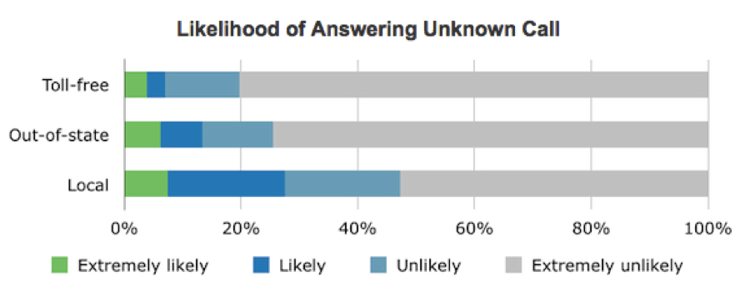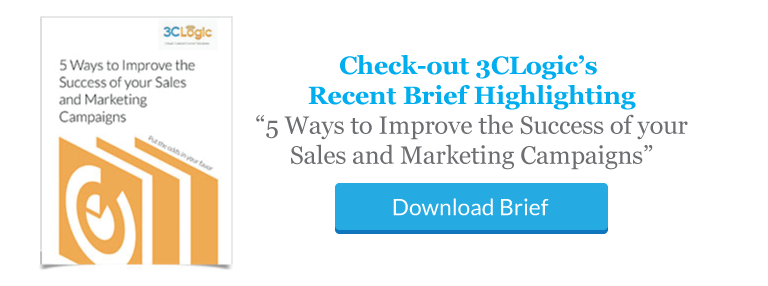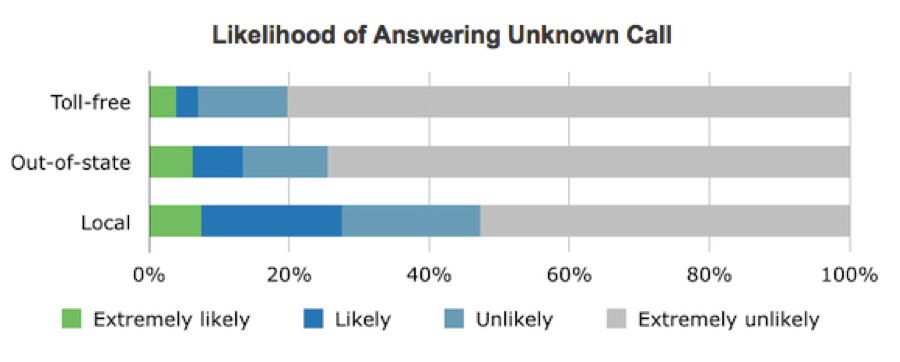Outbound sales has always been considered a challenging role—but as consumers become more mobile and their expectations continue to rise, sales representatives are finding it increasingly difficult to connect with their target audience. In fact in 2007, it took an average of 3.68 calls to reach a single prospect. Fast forward to today, it takes an astounding 8 attempts to get in front of one—twice as difficult. And for the typical sales rep, only 2% of calls result in an appointment—it can feel like searching for a needle in a haystack. With consumers harder to reach and prospects more challenging to sell, how can one boost the productivity and success of their inside sales team?
A few ways to increase the odds of connecting with and converting prospects:
1) Use the prospect’s area code: While it may seem like a minor detail, using the area code of the prospect whom you are calling can make a huge difference in answer rate—in fact, according to a recent survey conducted by Hello Operator, a Software Advice company, consumers are nearly four times more likely to answer calls from local numbers. And 80% say they would be extremely unlikely to answer a call from a toll free or unknown number—which are more often than not utilized by businesses. Certain contact center solutions offer their customers the ability to use “Local Presence Dialing”, enabling them to change their phone number and area code based on the individual whom they are calling, enhancing the likelihood that they answer.

2) Reach out to leads quickly: Every business acquires their leads in different ways. And for those who generate theirs on the web, following up within 5 minutes increases the likelihood that they will convert by 9 times. But to achieve this, the right processes and procedures must be in place to forward each lead and their information to a sales representative immediately, without delay. By syncing a marketing automation platform, which gathers the lead’s information, with your CRM and telephony platform/auto-dialer, leads can seamlessly be moved from the web to your agent’s queue, enabling sales reps to reach out to them automatically within a matter of seconds (may be over-kill, but you get the gist).
3) Have their information ready: An astounding 57% of customers believe sales reps are poorly prepared or not prepared at all for their initial meetings. And roughly one-third of deals could have been won had the seller been more informed and had acted more client-oriented. But the problem is not necessarily that they do not have the information they need about these individuals—it’s that they cannot access it quickly enough when juggling outbound prospecting and data management. But by integrating your telephony platform and database management or CRM solution, automatically populate agent screens with each prospect’s information before or immediately upon initiating a call, ensuring they are informed on prospect-specific details for every pitch.
4) Ask the right questions: Once a sales rep is finally in touch with a live prospect, they should do everything in their power to ensure the interaction goes off without a hitch, and managers should similarly give them the tools they need to facilitate a successful interaction. While the conversation itself should certainly be led by the agent, there is no harm in guiding them with custom prompts and mandating the collection of certain fields, ensuring all necessary information is provided and gathered—this can be done with the help of dynamic scripting engines, which cater to each prospect’s unique situation and needs.
5) Don’t forget to follow-up: For the majority of industries and businesses, it is simply not realistic to assume agents will make a sale during their first customer interaction—in fact, 80% of sales require at least 5 follow-ups after the initial meeting. Yet still, almost half of sales reps give up after 1 follow-up. While a large part of this rests on the shoulders of the representative, proper integration between call center software, CRM, and marketing automation can help automate lead nurturing, triggering actions in workflows and scheduling follow-up calls on agent calendars. Just a simple way to help keep them on track.





